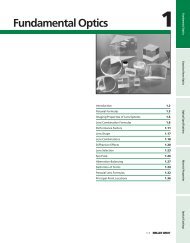Intel PXA250 and PXA210 Applications Processors
Intel PXA250 and PXA210 Applications Processors
Intel PXA250 and PXA210 Applications Processors
Create successful ePaper yourself
Turn your PDF publications into a flip-book with our unique Google optimized e-Paper software.
MultiMediaCard (MMC) 5<br />
The MultiMediaCard (MMC) is a low cost data storage <strong>and</strong> communication media. The MMC<br />
supports the translation protocol from a st<strong>and</strong>ard MMC or Serial Peripheral Interface (SPI) bus to<br />
an application bus.<br />
The MMC controller in the applications processor is compliant with The MultiMediaCard System<br />
Specification, Version 2.1. The only exception is one <strong>and</strong> three byte data transfers are not<br />
supported. The MMC controller is capable of communicating with a card in MMC or SPI mode.<br />
Your application is responsible for specifying the MMC controller communication mode.<br />
5.1 Schematics<br />
The MultiMediaCard (MMC) controller on the applications processor supports MMC <strong>and</strong> SDCard<br />
devices. (The MMC controller does not support SDCard nibble mode.) This section presents<br />
several options on how to connect each type of device to the controller.<br />
5.1.1 Signal Description<br />
MMC controller signal functions are described in Table 5-1.<br />
Table 5-1. MMC Signal Description<br />
Signal Name Input/Output Description<br />
MMCLK Output Clock signal to MMC<br />
MMCMD BiDirectional Comm<strong>and</strong> line<br />
MMDAT BiDirectional Data line<br />
MMCCS0 Output Chip Select 0<br />
MMCCS1 Output Chip Select 1<br />
The MMCLK, MMCCS0, <strong>and</strong> MMCCS1 signals are routed through alternate functions within the<br />
applications processor general purpose input/output (GPIO) module. Each of these signals can be<br />
programmed to a particular GPIO pin.<br />
The signals defined in The MultiMediaCard System Specification for an MMC device are CLK,<br />
CMD, <strong>and</strong> DAT which correspond to the MMCLK, MMCMD, <strong>and</strong> MMDAT in the applications<br />
processor, respectively. The two chip selects in the controller are for the MMC SPI mode <strong>and</strong><br />
correspond to the reserved pin of two different devices, defined in the specification.<br />
The signals defined in the Physical Layer Specification of the SD Memory Card Specifications for<br />
an SDCard device are CLK, CMD, <strong>and</strong> DAT0-DAT3. The obvious difference is the number of<br />
DAT signals. In addition, the socket for an SDCard contains mechanical switches for write protect<br />
(WP) <strong>and</strong> card detect (CD). For an SDCard to be connected to the MMC controller, only one data<br />
line, DAT0, is used. Otherwise the signal mapping remains the same as an MMC device. The WP<br />
<strong>and</strong> CD switches on the socket are discussed in Section 5.1.2, “How to Wire” on page 5-2.<br />
<strong>PXA250</strong> <strong>and</strong> <strong>PXA210</strong> <strong>Applications</strong> <strong>Processors</strong> Design Guide 5-1
















